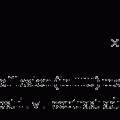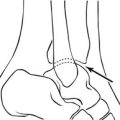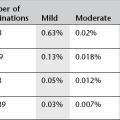Thyroid and parathyroids
Methods of imaging the thyroid and parathyroid glands
Ultrasound of thyroid
Gharib, H, Papini, E, Paschke, R, et al. American Association of Clinical Endocrinologists, Associazione Medici Endocrinologi, and European Thyroid Association medical guidelines for clinical practice for the diagnosis and management of thyroid nodules. Endocrine Practice. 2010; 16(Suppl 1):1–43.
Johnson, NA, Tublin, ME, Ogilvie, JB. Parathyroid imaging: technique and role in the preoperative evaluation of primary hyperparathyroidism. Am J Roentgenol. 2007; 188(6):1706–1715.
CT and MRI of thyroid and parathyroid
Indications
1. In staging of known thyroid malignancy
2. To assess extension of substernal goitre and tracheal compromise.
As a result of its iodine content, normal thyroid is hyperdense relative to adjacent soft-tissues on non-contrast-enhanced CT. Other than for staging medullary thyroid cancer, CT of the thyroid is routinely performed without intravenous (i.v.) contrast which interferes with subsequent radionuclide thyroid imaging or treatment. Particular care must be taken if iodinated i.v. contrast is administered to hyperthyroid patients (see Chapter 2). For MRI, gadolinium-based i.v. contrast agents can be used without compromise.
In parathyroid disease, contrast-enhanced CT and MRI are used:
Gharib, H, Papini, E, Paschke, R, et al. American Association of Clinical Endocrinologists, Associazione Medici Endocrinologi, and European Thyroid Association medical guidelines for clinical practice for the diagnosis and management of thyroid nodules. Endocrine Practice. 2010; 16(Suppl 1):1–43.
Johnson, NA, Tublin, ME, Ogilvie, JB. Parathyroid imaging: technique and role in the preoperative evaluation of primary hyperparathyroidism. Am J Roentgenol. 2007; 188(6):1706–1715.
Radionuclide thyroid imaging
Indications
Radiopharmaceuticals
1. 99mTc-pertechnetate, 80 MBq max (1 mSv ED). Pertechnetate ions are trapped in the thyroid by an active transport mechanism, but are not organified. Cheap and readily available, it is an acceptable alternative to 123I.
2. 123I-sodium iodide, 20 MBq max (4 mSv ED). Iodide ions are trapped by the thyroid in the same way as pertechnetate, but are also organified, allowing overall assessment of thyroid function. 123I is the agent of choice, but as a cyclotron product is therefore relatively expensive with limited availability. (131I-sodium iodide can also be used for imaging but is associated with a significantly higher radiation dose, so is generally used in the context of whole-body imaging post 131I ablation.)
Technique
99mTc-pertechnetate
1. I.v. injection of pertechnetate
2. After 15 min, immediately before imaging, the patient is given a drink of water to wash away pertechnetate secreted into saliva
3. Start imaging 20 min post injection when the target-to-background ratio is maximum
4. The patient lies supine with the neck slightly extended and the camera anterior. For a pinhole collimator, the pinhole should be positioned to give the maximum magnification for the camera field of view (usually 7–10 cm from the neck)
5. The patient should be asked not to swallow or talk during imaging. An image is acquired with markers on the suprasternal notch, clavicles, edges of neck and any palpable nodules.
Martin, WH, Sandler, MP, Gross, MD. Thyroid, parathyroid, and adrenal gland imaging. In: Sharp PF, Gemmell HG, Murray AD, eds. Practical Nuclear Medicine. 3rd ed. London: Springer-Verlag; 2005:247–272.
Richards, PS, Avril, N, Grossman, AB, et al. Thyroid cancer. In: Husband J, Reznek R, eds. Imaging in Oncology. 3rd ed. London: Informa; 2009:642–679.
Sarkar, SD. Benign thyroid disease: what is the role of nuclear medicine? Semin Nucl Med. 2006; 36(3):185–193.
Radionuclide parathyroid imaging
Radiopharmaceuticals
1. 99mTc-methoxyisobutylisonitrile (MIBI or sestamibi), 500 MBq typical, 900 MBq max (11 mSv ED) and 99mTc-pertechnetate, 80 MBq max (1 mSv ED). Both MIBI and pertechnetate are trapped by the thyroid, but only MIBI accumulates in hyperactive parathyroid tissue. With computer subtraction of pertechnetate from MIBI images, abnormal accumulation of MIBI may be seen. MIBI also washes out of normal thyroid tissue faster than parathyroid, so delayed images (1–4 h) can highlight abnormal parathyroid activity.
2. 99mTc-tetrofosmin (Myoview) can be used as an alternative to MIBI, and is as effective if the subtraction technique is used, but not as good for delayed imaging since differential washout is not as great as for MIBI.
3. 201Tl-thallous chloride (80 MBq max, 18 mSv ED) was previously used in conjunction with 99mTc-pertechnetate, but is increasingly being replaced by the technetium agents due to their superior imaging quality and lower radiation dose.
Equipment
1. Gamma-camera (small field of view preferable for thyroid images, large field of view for chest images)
2. High-resolution parallel hole collimator. A pinhole collimator can also be used, but may result in repositioning magnification errors that compromise subtraction techniques
3. Imaging computer capable of image registration and subtraction.
Technique
1. 80 MBq 99mTc-pertechnetate is administered i.v. through a cannula which is left in place for the second injection.
2. After 15 min the patient is given a drink of water immediately before imaging, to wash away pertechnetate secreted into saliva.
3. The patient lies supine with the neck slightly extended and the camera is positioned anteriorly over the thyroid.
4. The patient should be asked not to move during imaging. Head-immobilizing devices may be useful, and marker sources may aid repositioning.
5. 20 min post injection, a 10-min 128 × 128 image is acquired.
6. Without moving the patient, 500 MBq 99mTc-MIBI is injected i.v. through the previously positioned cannula (to avoid a second venepuncture which might cause patient movement).
7. 10 min post injection, a further 10-min 128 × 128 image is acquired.
8. A chest and neck image should then be acquired on a large field of view camera to detect ectopic parathyroid tissue.
9. Computer image registration and normalization is performed and the pertechnetate image subtracted from the 10-min MIBI image.
10. If a lesion is clearly visible in the subtracted image, the patient can leave.
11. If the lesion is not obvious, late MIBI imaging can be performed at hourly intervals up to 4 h if necessary to look for differential washout.
Additional techniques
1. In patients in whom pertechnetate thyroid uptake is suppressed, e.g. with use of iodine-containing contrast media or skin preparations, oral 123I (20 MBq) administered several hours before MIBI may be considered.
2. SPECT and SPECT-CT may be used to improve localization and small lesion detection.
3. Dynamic imaging with motion correction may reduce motion artifact.
Johnson, N, Tublin, ME, Ogilvie, JB. Parathyroid imaging: technique and role in the preoperative evaluation of primary hyperparathyroidism. Am J Roentgenol. 2007; 188(6):1706–1715.
Kettle, AG, O’Doherty, MJ. Parathyroid imaging: how good is it and how should it be done. Semin Nucl Med. 2006; 36(3):206–211.
Palestro, CJ, Tomas, MB, Tronco, GG. Radionuclide imaging of the parathyroid glands. Semin Nucl Med. 2005; 35(4):266–276.





